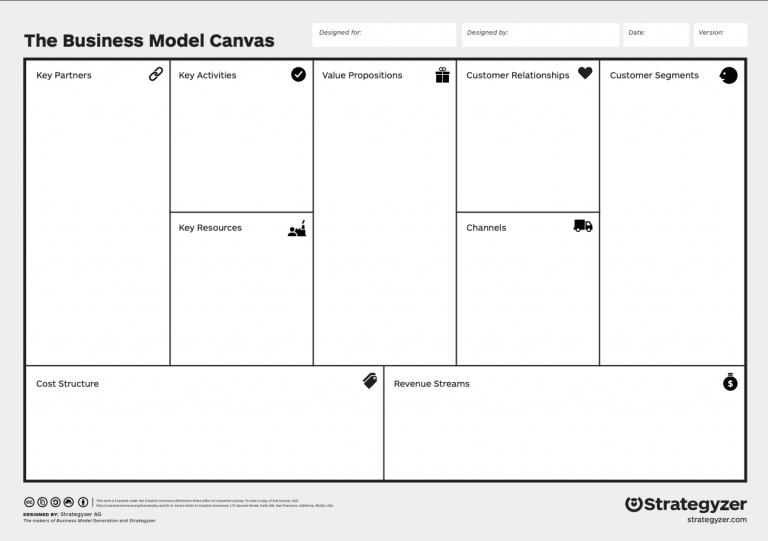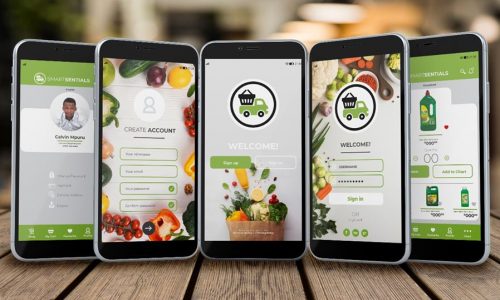
Business Modeling
A 6-Minute Read:
In any industry, the goal of every business is to make a profit. To reach these goals, businesses utilize a number of models, tools and free resources. Since all businesses are interested in profits, The Business Model Canvas is one of the most important business development tools for any venture.

A business model looks at the way your business makes a profit. If your business has multiple income streams, you might also have multiple business models – but the point of them all is to show you how to go from point A to making a profit.
The slide below shows the key points covered in a business model. Knowing your customers, the unique value your business brings to their life, as well as the partners and resources you’ll need to execute – will tell you how much it will cost you to do business and how much profit you can expect to make. Beyond this, the true genius of a business model is understanding how playing with each of the parts can impact your profits and overall growth.
Understanding your business model and how you can innovate it is important whether you’re at a concept stage or if you are an established business. Many business modelling consultants use open source tools like The Business Model Canvas to describe, analyze and design business models.
If you’ve ever found yourself unsure about how much your business should charge or which areas you can focus on to maximise profits, this canvas can be the starting point in your business-modelling journey. The best parts come later, when you’ll be able to use your knowledge to redefine what it means to do business in your industry. But for now, the basics:
Value Proposition
At the centre of your business model sits the value proposition, which looks at the unique value your business offers its customers. To come up with a value proposition, businesses look at the needs, wants and pain points of a particular group or audience. The idea is that this information will be used to create services, products and overall business models tailored to these key points (their needs, fears, wants). A smooth video explanation can be found here.

At this stage it is also useful to consider what substitutes customers are currently using to fulfil their needs. For example, a flexible working space for remote-working employees would start by looking at local coffee shops ☕☕; which the audience could currently be using to meet their remote-working space needs.
Customer Segmentation
Once you have an idea of the group or audience you are targeting (i.e. People who need remote-working space in your vicinity), you need to be more specific about which part of this audience your business will focus on. For example, of the people that need working space – are you targeting creatives, startups or admin employees who need to finish a spreadsheet on a tight deadline?
The more detail you can get into, the more your customers can inform the channels your business should be accessible on. Channels can include:
- Social platforms or lines for announcements, information and general awareness.
- Channels where customers can contact, enquire or make purchases (this can be an online store, while a physical shop is also a channel)
- After-sales channels where past customers can access support and other information.
By now you can also start thinking about the types of customer relationships your business will focus on building. Are you consistently trying to gain new customers? Or are you focused on retaining and upselling your current audience?
Answering all these questions about your business should give you a clearer picture of who your customers are, and inform the next steps of your business model.
Value Chain
Once you know your customers, your business can start thinking about the key partners, resources and operating activities required to deliver all the promises you made in your value proposition.
An important consideration here is your customer experience, which extends to all your employees and the partners you work with. Think about the type of delivery service you would expect from a luxury online clothing store versus what you would accept from a fast food chain. In this case, the partners you choose (e.g. courier services) will either build or break the relationship you have with your customers.
“While many businesses neglect the customer experience. Customers always remember how they were treated and how they felt while using your product/service”
In a similar vein, this stage can help you see how many full time or freelance human resources are required. Do you need an office (is this a channel your customers prefer)? Which suppliers should you work on establishing stronger relationships with?
By the end of this stage, there should be a clear idea of how much capital you need to get started or how much it will cost to get your business running. Later, when your business model is complete, you will likely keep returning to this part of your canvas to see where you can limit expenses or do things differently to maximise profits.
The Money
Even businesses focused on making a social impact, like NPOs, can still measure the value of their efforts by statistics, e.g. 300,000 varsity students sponsored with food & groceries vouchers to the value of R4,000 each. The point is, you should be able to quantify the value of your efforts vs. the rewards you’ll be getting out of them.
“How much does it cost to service my customers?”
When it comes to cost structures, you’re essentially rounding up the fixed and variable costs it will take to run your business model (this is simply explained here). Is your business aiming to provide the best prices or are you aiming to offer a premium service? In the end, your profit will be the difference between this cost and your revenue streams (the bottom blocks of the canvas).
When it comes to revenue streams, it’s where you delve into how you’re going to charge for your services. There are many popular revenue models and combinations, and some that have not been discovered yet. Some of the best known ones include the age-old “buy & sell” model, commission-based, freemium and licensing-based models. You can read about revenue models here
And just like that, business should be booming. By now you should know your customers, what problem you’re solving for them, what resources you’ll need to cater to them, and how you’re going to count up all those juicy profits. Watch the video below to hear Nokwazi Mzobe tell us about some of the key points in her talk:
Written by: Lungelo Hlela (I am Multeemedia) // Images taken by: @dayphotolife
– – – – –
Lungelo Hlela is a Digital Copywriter based in Johannesburg, South Africa. When he’s not writing for brands, most of his work includes themes about social issues, history and popular culture. Follow him @lungelosam for more of his existentialist ramblings and romantic ideals.







